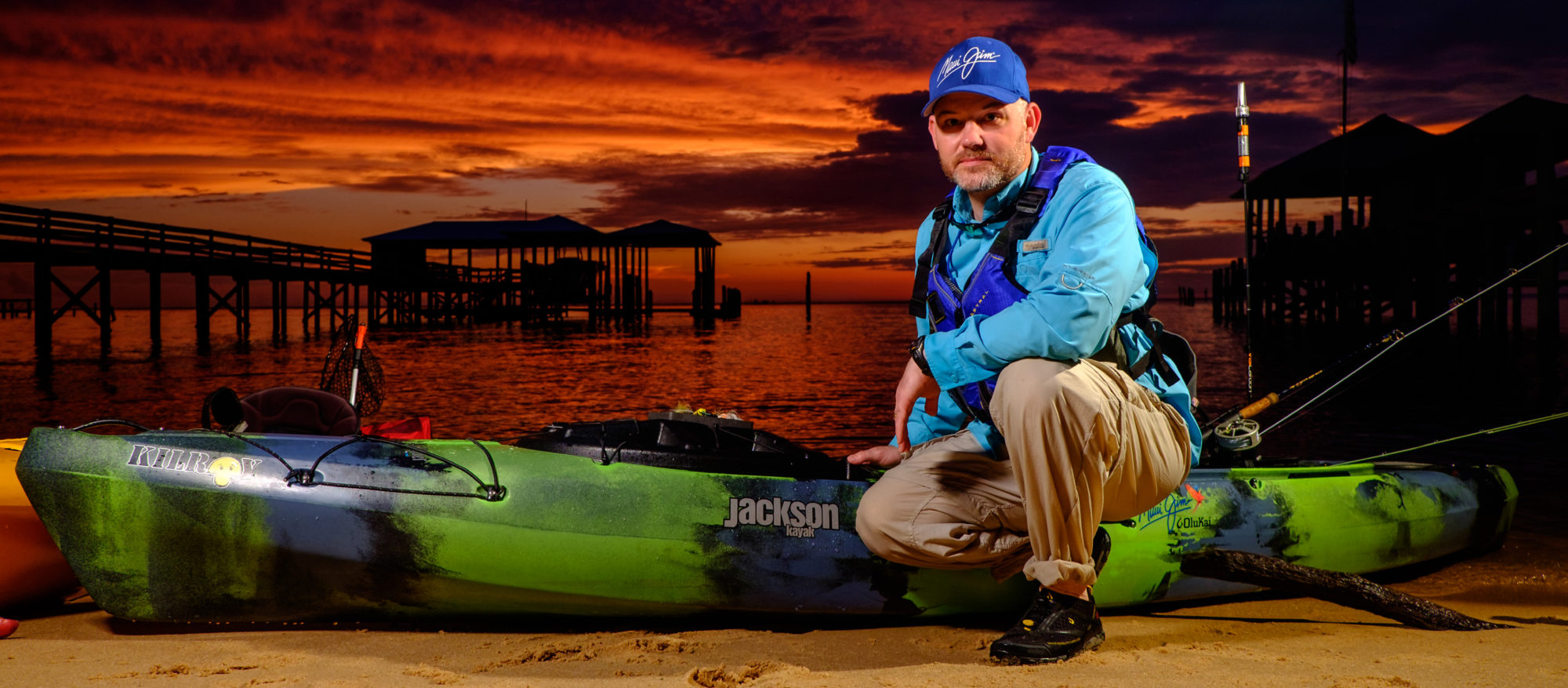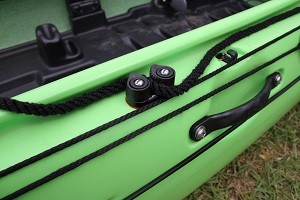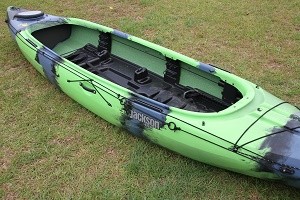 Over the years I’ve learned that an easy to use and quiet anchor system is key to successfully closing the deal on an approach to feeding fish or settling into position for searching a potential spot. It’s difficult to beat an anchor trolley system as it provides options for a stake out pole or anchor on a line. The system made by Hobie provides all working parts including the screws and washers. The installation takes about an hour and a half.
Over the years I’ve learned that an easy to use and quiet anchor system is key to successfully closing the deal on an approach to feeding fish or settling into position for searching a potential spot. It’s difficult to beat an anchor trolley system as it provides options for a stake out pole or anchor on a line. The system made by Hobie provides all working parts including the screws and washers. The installation takes about an hour and a half.
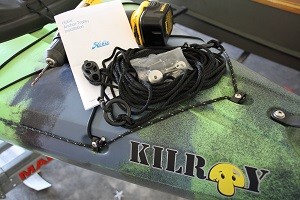 The directions are easy to follow, right down to drill bit size for holes. Drill as few holes as possible through the hull of your kayak, but when doing so adds value like this assembly does make sure and squeeze silicone into the holes of the pulley bracket and onto the screw shaft for good measure.
The directions are easy to follow, right down to drill bit size for holes. Drill as few holes as possible through the hull of your kayak, but when doing so adds value like this assembly does make sure and squeeze silicone into the holes of the pulley bracket and onto the screw shaft for good measure.
![]() There’s different philosophies of how far forward to assemble the front pulley bracket, but I put mine about 24″ from the tip of bow although the instructions advise twelve inches. However, I do follow directions on assembling the rear pulley twelve inches from stern. With assembling the front pulley farther aft, I can be assured the anchor rope will be underneath surface of water before plane of the nose so I don’t clip the line with my fly or line when retrieving from a cast.
There’s different philosophies of how far forward to assemble the front pulley bracket, but I put mine about 24″ from the tip of bow although the instructions advise twelve inches. However, I do follow directions on assembling the rear pulley twelve inches from stern. With assembling the front pulley farther aft, I can be assured the anchor rope will be underneath surface of water before plane of the nose so I don’t clip the line with my fly or line when retrieving from a cast.
The other day I fished with Jackson Kayak Pro-Staffer Justin Seiffert. He recommends installing the front pulley at the mid-kayak/cockpit region. The reasoning behind this, according to Justin, is to minimize the risk of a fish getting caught in the line when fighting anywhere out in front of the angler’s seating position. Another idea that Johnson Outdoors Pro-Staffer Blake Walters utilizes is an anchor and rope that is coiled onto a floating buoy. Blake disengages the buoy assembly from the trolley ring when he catches a fish. This is a great idea for the angler who wants to drift away from the risk of being wrapped up in an anchor line while fighting a fish, and then able to re-unite with the anchor by visibly locating the small buoy.
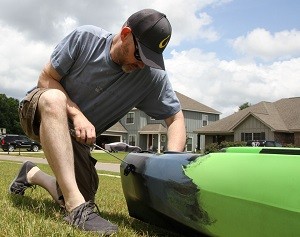 Once the pulleys are in place, thread the line back through the pulleys to required length for your kayak. It will be important to tighten the rope prior to securing onto pulley system, as it will stretch a little over time.
Once the pulleys are in place, thread the line back through the pulleys to required length for your kayak. It will be important to tighten the rope prior to securing onto pulley system, as it will stretch a little over time.
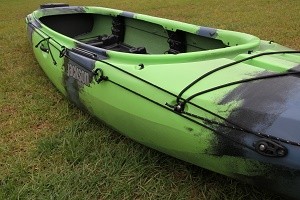 The anchor rope will feed through the trolley ring and you can store the excess rope underneath, beside seat, or in a netted pocket if available. I prefer to use an 8 lb polymer coated dumbbell as an anchor. A metal claw anchor works well, but they make a lot of noise inside the kayak and as they hit the floor of the water column, they become great conservation tools (scaring fish away)! It should be noted that I don’t recommend using an anchor if fishing big open water or flowing rivers for safety reasons. In the case of expansive open water, large swells can lift and then flip the kayak if an anchor is deployed, making for a bad day.
The anchor rope will feed through the trolley ring and you can store the excess rope underneath, beside seat, or in a netted pocket if available. I prefer to use an 8 lb polymer coated dumbbell as an anchor. A metal claw anchor works well, but they make a lot of noise inside the kayak and as they hit the floor of the water column, they become great conservation tools (scaring fish away)! It should be noted that I don’t recommend using an anchor if fishing big open water or flowing rivers for safety reasons. In the case of expansive open water, large swells can lift and then flip the kayak if an anchor is deployed, making for a bad day.
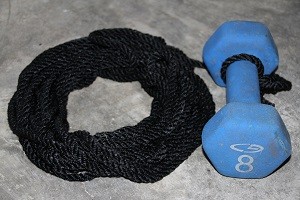 A cleat is a nice addition to secure the rope for easy operation of maintaining anchor depth or quick release when retracting line.
A cleat is a nice addition to secure the rope for easy operation of maintaining anchor depth or quick release when retracting line.
If there’s one accessory that will increase enjoyment of kayak fishing, it’s adding an anchor trolley. The Hobie anchor trolley system is easy to install and a feature of your kayak that will be used often. Check it out at your local kayak dealership!
Copyright 2015 by icastinayak.com. All rights reserved
